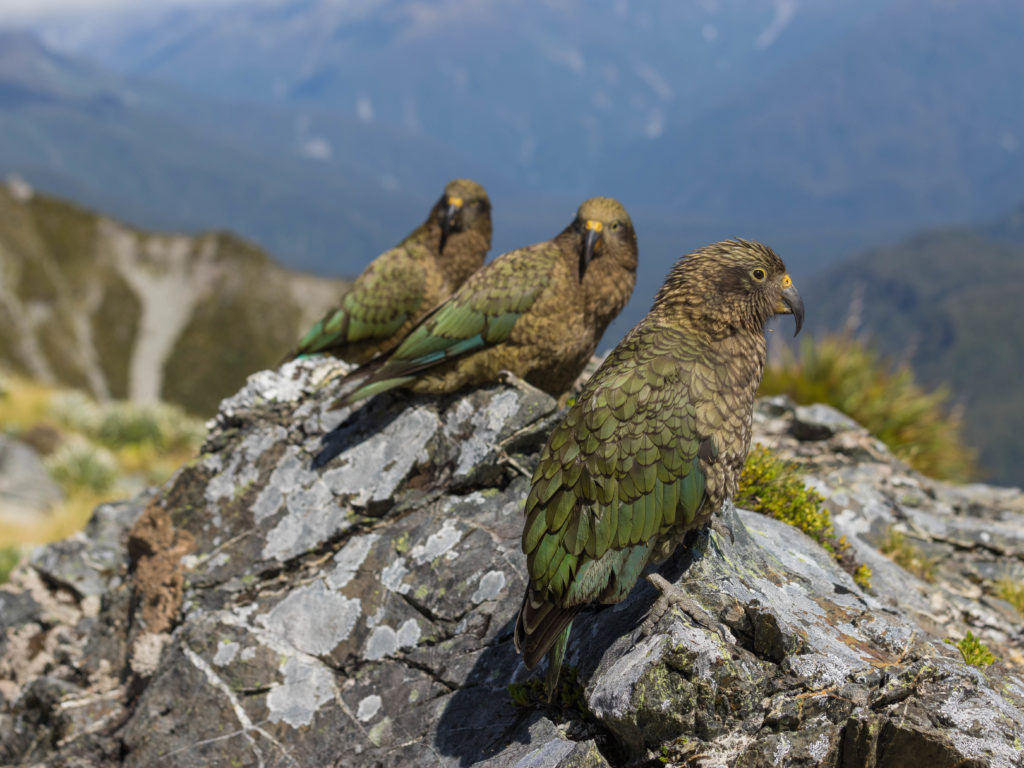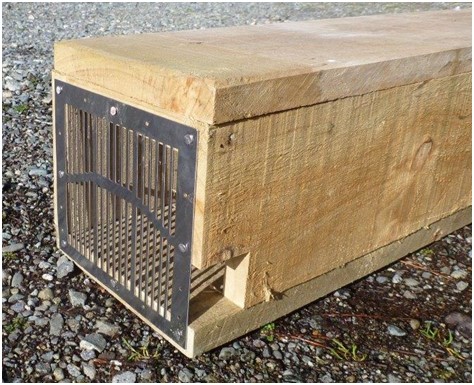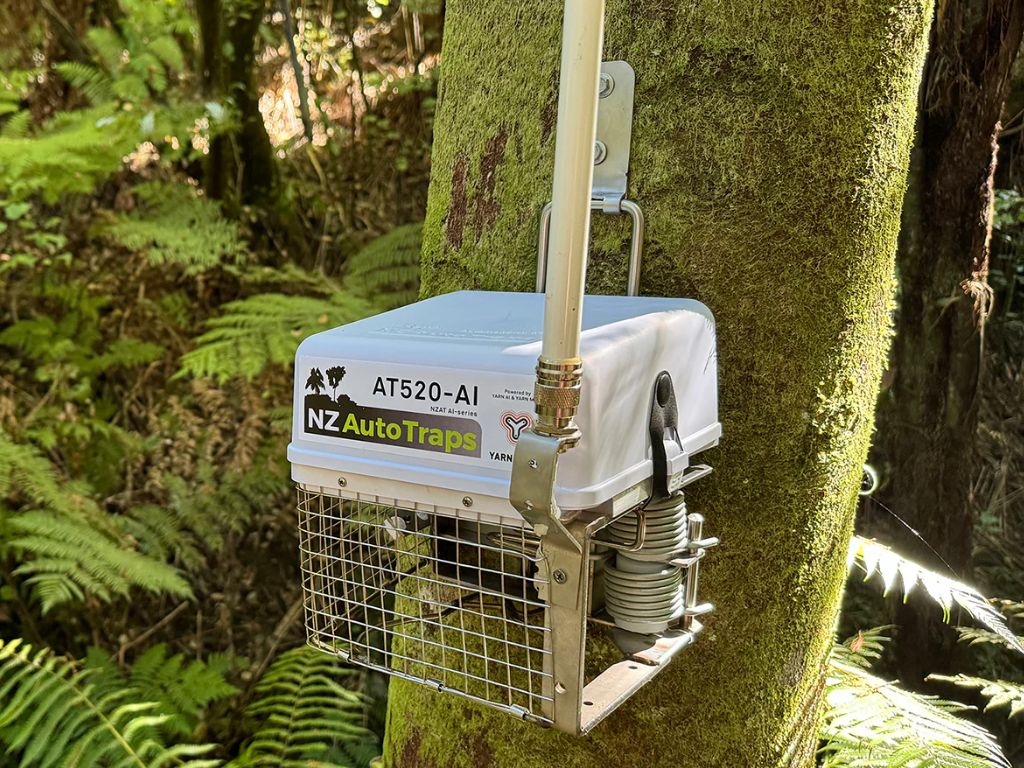Kea are naturally curious – but that curiosity can be dangerous for them. The Kea Conservation Trust has a safe practice guide for ground-based predator control in kea habitat. You can protect native wildlife while keeping these clever parrots out of harm’s way.

Predator control beneficial for kea
The world’s only alpine parrot, the kea, are known for tampering with predator control traps. They poke sticks into traps to set them off, undo screws, bend wire grilles and other inquisitive behaviour. This has had fatal consequences for some kea.
However, Kea Conservation Trust chairperson Tamsin Orr-Walker says predator control is hugely beneficial to kea, as they spend a lot of their time foraging, playing and nesting on the ground.
Monitoring shows when predators are controlled about 70% of kea nests are successful, producing at least one chick. Without pest control, this success rate drops to 40% and can even plummet to 10% in stoat/rat plague years.
Intelligent and innovative, kea find new ways to get themselves into trouble with traps so the ‘Ground-based pest control in kea habitat safe practice guide (PDF, 1.4 KB)‘ is a regularly updated must-have for people doing ground predator control in kea habitat.
The guide identifies which predator control devices are known to be safe for use in kea habitat or can be made safe with simple modifications. Traps that are unsuitable and should not be used are also identified.
It also provides a means to report kea injuries or deaths caused by predator control devices for ongoing improvements.
“People may be concerned about reporting a dead kea in their trap,” says Tamsin, “We want to make people really aware of how important it is to report it, to increase our knowledge of the dangers kea face and ultimately increase kea safety.”
Another key thing to remember is kea aren’t just found in alpine areas.
They are far-ranging – even down to sea level on the southern, western and northern coasts of the South Island.

How to protect clever kea
Kea are incredibly playful and know how to use tools. They can remove the screws and nails holding down the lids of DOC 150/200 traps. They can roll the traps over, set them off by poking a stick through the front opening and yank off the front wire mesh.
The guidelines recommend making some modifications to make a DOC 150/200 trap as safe as possible from tampering. The metal components can be purchased online from Fielden Metalworks.

“Secure lid with 65mm galvanised steel screws (not nails or short screws). The most effective method is to place three attachment points on every lid.
Three points of contact substantially reduce risks from human error, wear and tear or persistent kea attack.
Place metal brackets around side fasteners to prevent kea tearing wood away from around it.
Place solid, stainless steel grills on the ends of trap boxes and using side entrances.
Stake the trap boxes with 10mm re-bar.”
For a full list of traps, bait delivery stations and poisons download the ‘Ground-based pest control in kea habitat safe practice guide (PDF, 1.4 KB)‘.
Reporting kea injury or death
Reporting kea injury or death is essential and should be commended to learn and further reduce risks to kea, the guide says.
“As new traps are commercialised, it is important to report incidents so they may be addressed.”
A reporting form is available within the guide.
What’s next for kea-safe control?
Researchers have been inventing new kea-proof traps. Traps that use Artificial Intelligence to essentially “think for themselves” and only trigger on target predators are in development and trial across Aotearoa.
NZ Auto Traps is trialling AI-powered traps that use cameras and an algorithm trained on thousands of images to target only rats and possums. Their basic trap, the AT220, is on the ‘do-not use list’, however the new ‘smart’ AT220-AI traps have been trialled in the presence of kea. In more than 2000 images the AI didn’t once misidentify kea as a target species.
Critter Solutions has also invented an automatic trap that can tell a kea from a possum. The trap can be far more open and inviting and won’t accidentally kill other species. By using AI there is no need for manual triggers.

Contact the Kea Conservation Trust for further information or download the safe practice guide (PDF, 1.4 KB).

